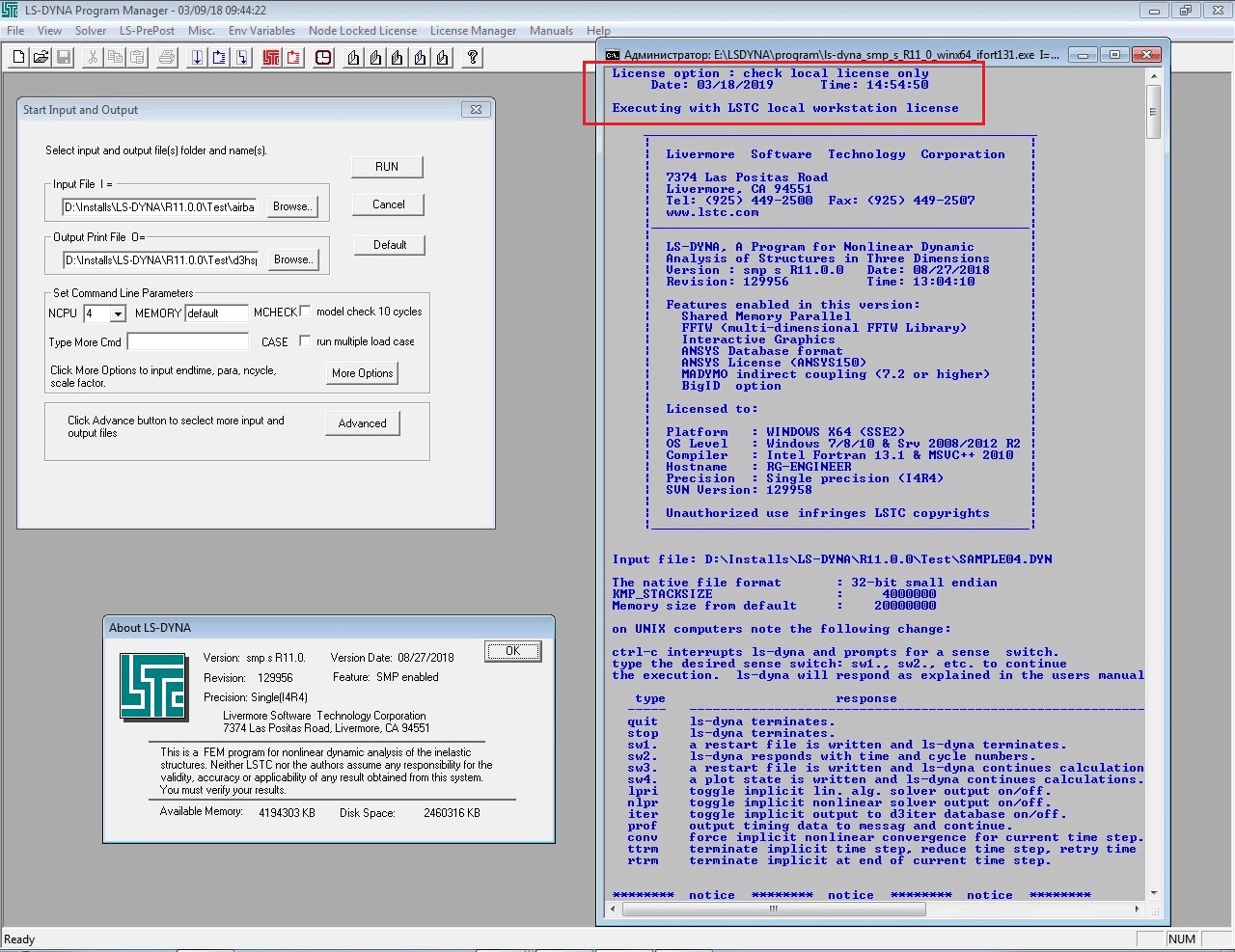
LS-DYNA function introduction
Crashworthiness – For many automotive companies, LS-DYNA is a tool for understanding the deformation of complex systems such as vehicle structures. LS-DYNA's ability to simulate contacts and its extensive material models make it ideally suited for this type of analysis. It also includes features specific to many automotive applications, such as airbag, accelerometer and adhesive joint modeling.
Drop Testing – For years, LS-DYNA has been used to simulate impact events on everything from small electronics like cell phones and laptops to large nuclear fuel containers. Features include: fluid-structure coupling (ALE/ SPH) for simulating liquid-filled vessels Element Free Galerkin (EFG) for modeling cracks Explicit-implicit switching for studying steady-state deformation
Manufacturing Processes – LS-DYNA can be used to model and analyze manufacturing processes and evaluate proposed metal forming processes and tool designs. Users can simulate trimming and springback as the molding process progresses. Supported processes include:
Explosions and high-speed impacts – LS-DYNA can be used to simulate high-energy events and is ideally suited for explosions. Air explosions can be simulated as well as buried explosive charges and blast loads on structures. Explosion methods include:
Composite Materials – Composite materials can be modeled in LS-DYNA using a combination of specialized material models and ply material angle data. Different material definitions and material angles can be specified by the thickness of the component, and ply failures can be included in the material definition.
LS-DYNA software features
1. The analysis functions of LS-DYNA include:
Complete 2D and 3D functionality
Nonlinear dynamics
Rigid body dynamics
Quasi-static simulation
Normal mode
Linear Statics
Thermal analysis
Fluid Analysis
Euler ability
ALE (arbitrary Lagrangian - Euler)
FSI (Fluid-Structure Interaction)
Navier-Stokes Liquid
Compressible Fluids Solver, CESE (Conservation Element and Solution Element)
FEM-rigid multi-body dynamics coupling (MADYMO, Cal3D)
Underwater impact
Failure analysis
Crack propagation
Real-time acoustics
Implied rebound
Multiple physics coupling
Structure - Thermal Coupling
Adaptive remeshing
SPH (Smoothed Particle Hydrodynamics)
EFG (Element Free Galerkin)
Radiation transport
EM(Electromagnetism)

2. Material library
LS-DYNA’s material library includes:
Metal
Plastic
glass
Bubble
Fabric
Elastomer
Honeycomb
Concrete and soil
Viscous fluid
User-defined materials
3. Element library
LS-DYNA’s element library includes:
Beams (standard, truss, discrete, cable and weld) (more than 10 beam element recipes)
Discrete components (springs and dampers)
Concentrated inertia
Concentrated crowds
Accelerometer
Sensor
Seat belt
Preload
Hook
Slip ring
Shells (3, 4, 6 and 8 nodes, including 3D shells, membranes, 2D plane stress, plane strain and axisymmetric solids) (over 25 shell element recipes)
Solid (4-node and 10-node tetrahedron, 6-node pentahedron and 8-node hexahedron) (contains more than 20 solid element formulas)
SPH elements
Thick shell (8 nodes)
4. Contact Algorithm
The contact algorithms of LS-DYNA include:
Flexible body contact
Flexible body contact with rigid body
Rigid body in contact with rigid body
Side-to-side contact
Erosion Contact
Bundling surface
CAD surface
Rigid walls
Drawing beads
Scope of application
LS-DYNA application scope
1. Aerospace
LS-DYNA is widely used by the aerospace industry to simulate bird strikes, jet engine blade containment and structural failures.
Aerospace applications include:
Blade containment
Bird strikes (windshields and engine blades)
Failure analysis
2. Car crashworthiness and occupant safety
LS-DYNA is widely used by the automotive industry to analyze vehicle design. LS-DYNA accurately predicts how a car will behave in a collision and the impact of a collision on the car's occupants. With LS-DYNA, automotive companies and their suppliers can test vehicle designs without the need for tools or experimental test prototypes, saving time and money.
LS-DYNA update log
1: Optimized performance
2: We are serious about solving bug problems
Huajun editor recommends:
Looking around, there are software similar to this software everywhere on the Internet. If you are not used to this software, you might as well give it a try.Cruzr,FastCAM automatic programming nesting software,Hanwen production planning and scheduling software,Material weight calculation,Green apple weighing softwareWait for the software, I hope you like it!






































Your comment needs to be reviewed before it can be displayed